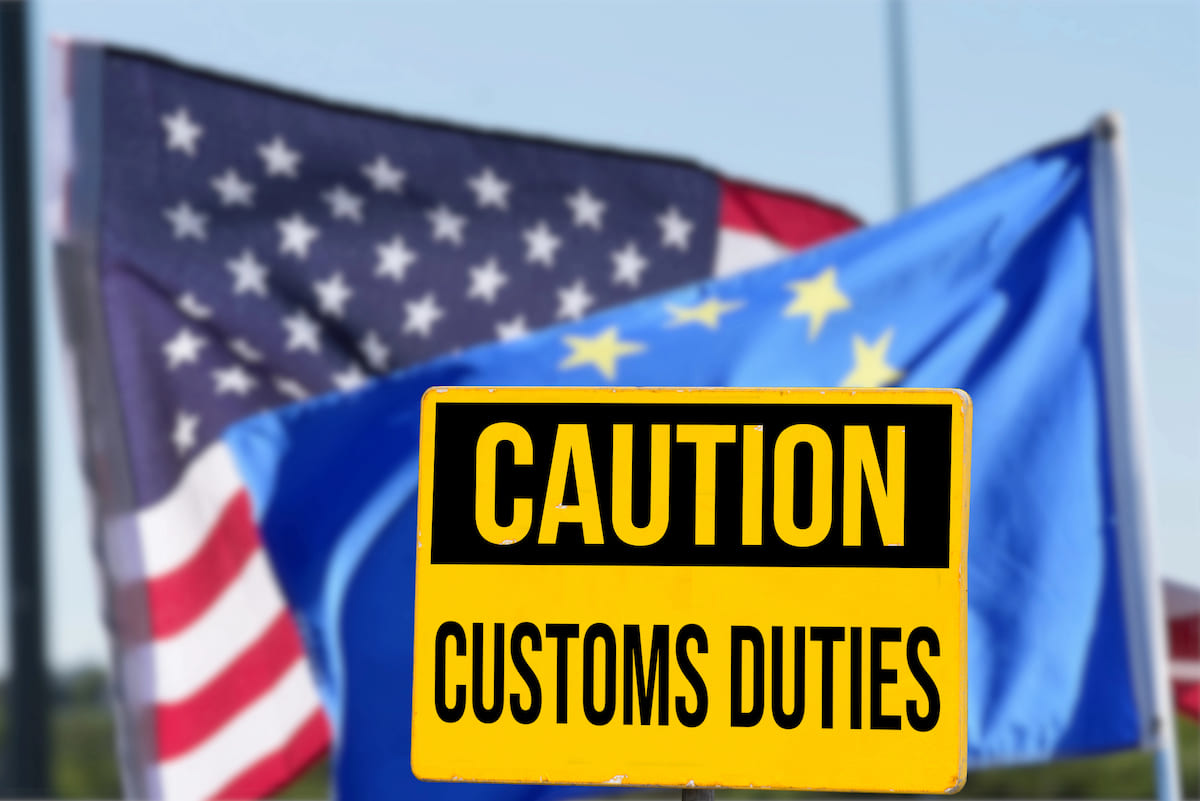
If the 30% tariff scenario remains in place, the consequences for Italian export supply chains could be severe.
What if the ongoing talks between the EU and the United States on the new 30% U.S. tariffs fail to reach a favorable outcome? One of the most concerning scenarios involves employment, with significant risks looming over Italy’s export-driven industries.
According to a study by Reportaziende.it, based on 2024 data from Istat-Comext and Eurostat, Italy exports roughly €63 billion in goods to the U.S. each year. More than half of that total, over €30 billion, comes from sectors directly targeted by the new tariffs. Preliminary estimates suggest that Italy could suffer up to €9 billion in direct losses. When factoring in broader effects on supply chains, margins, investments, and consumer spending, the total economic damage could rise to between €18 billion and €22 billion over the 2025–2026 period.
Most affected sectors
- Pharmaceuticals, accounting for 18% of Italy’s U.S. drug exports, or about $13.7 billion out of a $75 billion market.
- General mechanics, contributing 6.8% of the sector’s total value.
- Automotive, representing 5.5% of Italy’s national exports and 14.7% of the sector’s global trade.
- Industrial machinery, with exposure ranging from 5.0% to 6.8%.
- Wine and beverages, making up 4.4% of Italy’s exports and 22.7% of global exports in the sector.
- Fashion and leather goods, accounting for 3.2% of national exports and 9.1% of global trade.
- Furniture and home furnishings, totaling 2.5% of Italy’s exports and 14% globally.
- Metals and steel, with nearly 7% of the sector’s exports headed to the U.S.
- Medical electronics, responsible for 2.6% of global exports in that segment.
Northern Italy hit hardest
Estimates suggest that 75% of the employment impact would be felt in northern Italy, with potential national job losses ranging from 115,000 to 145,000. Emilia-Romagna alone could see over 25,000 jobs at risk. The tariff burden is expected to fall heavily on geographic areas that are home to dense industrial clusters and supply chains.
In Lombardy, especially in Milan, Brescia, and Mantua, major players include pharma, mechanics, fashion, and cheese producers.
In Emilia-Romagna, particularly in Parma, Modena, and Reggio, key industries include certified agri-food products such as cold cuts and Parmigiano Reggiano, as well as automotive—Ferrari being the standout name.
In Veneto, between Treviso, Verona, and Vicenza, the affected sectors include eyewear, wine, fashion, and cured meats.
In Tuscany, from Florence to Arezzo and Siena, threats loom over DOC wine, fashion, and jewelry.
Finally, in Piedmont, especially between Turin and Cuneo, the vulnerable sectors are auto parts, precision mechanics, and agri-food.
Outlook through 2026
An immediate consequence of the U.S. tariffs could be rising production costs, which could push consumer prices in the affected sectors up by 10% as early as January. This is expected to hit certified cheeses, cured meats, extra virgin olive oil, premium and DOC wines, and mid-to-high-end clothing and footwear.
By the fourth quarter of 2025, U.S. tariffs are projected to become a permanent fixture. Italian companies will likely face profit margin cuts and canceled orders. Starting in 2026, sectors like agri-food, mechanics, and fashion could see volume drops of up to 40%, potentially forcing many Italian SMEs to exit the U.S. market entirely. On its end, the EU may respond with countermeasures targeting whiskey, automotive, and tech products.
These projections are based on the current framework, which stems from a letter by President Trump outlining a 30% tariff plan. However, intense negotiations are ongoing across the Atlantic, and the EU’s objective remains to push for a lower tariff agreement.